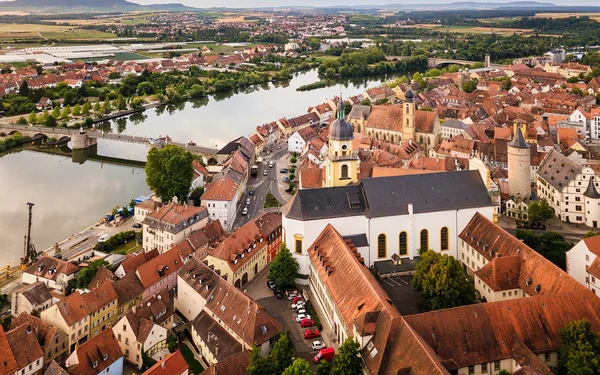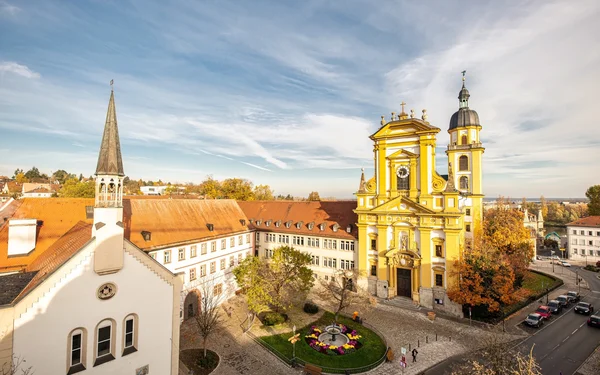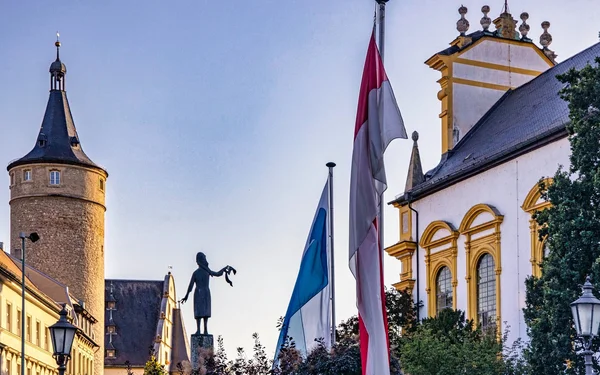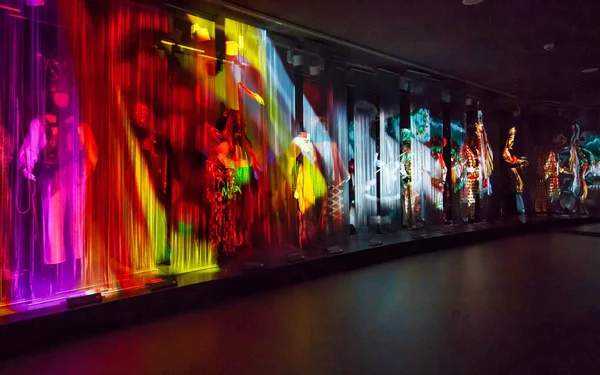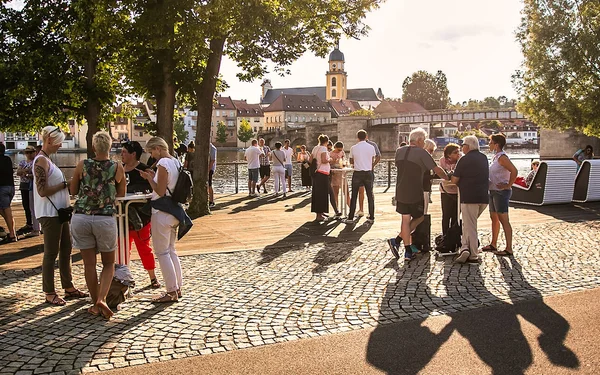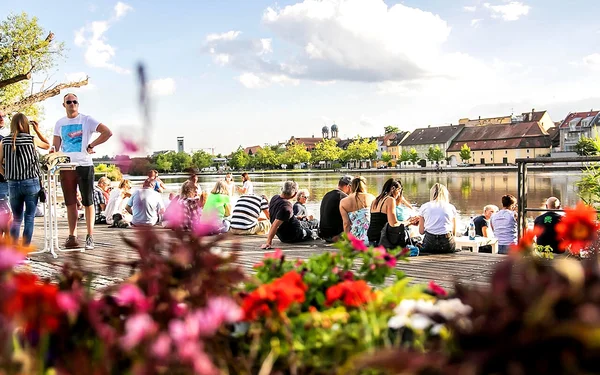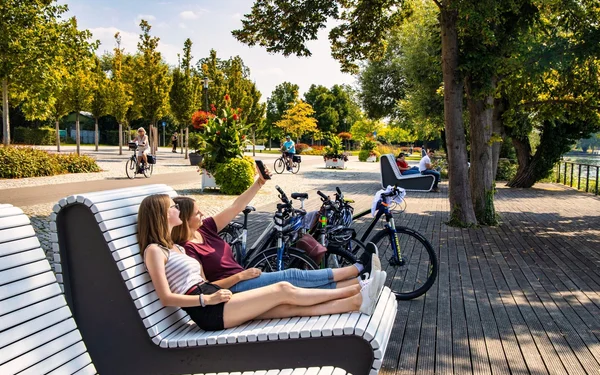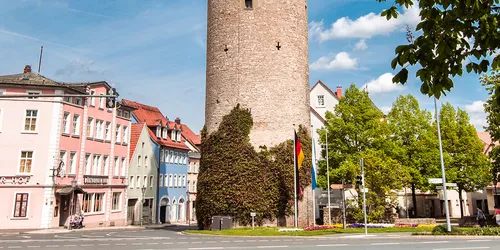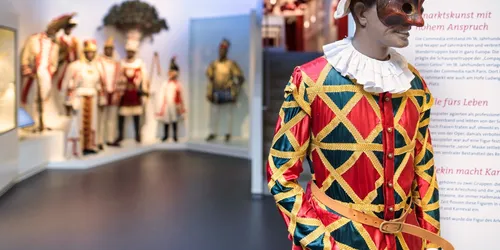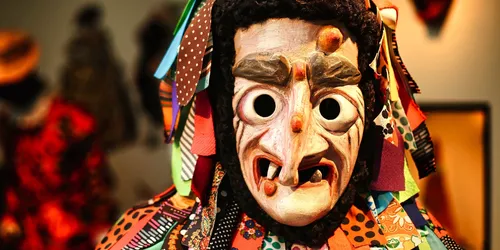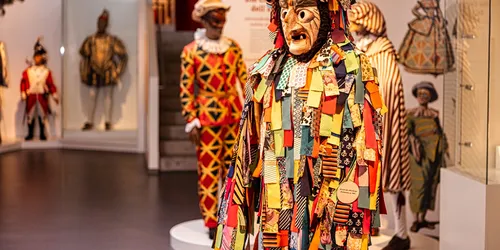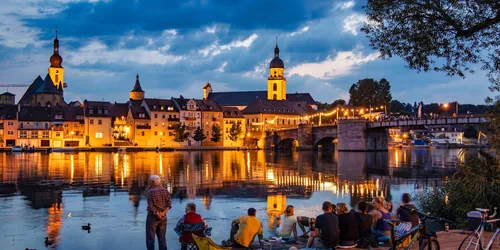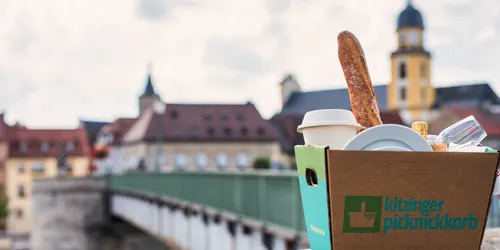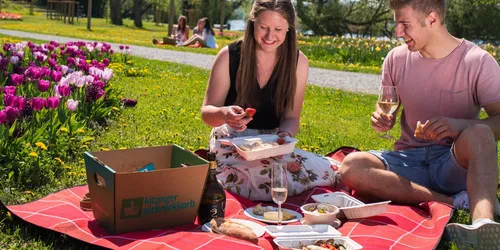Myths, masks, wine enjoyment - Kitzingen pleasure tour
A leaning tower, the supposed grave of Dracula and a full picnic basket await you on this magical tour of the city. Curious? Let's take the train to Kitzingen!
Kitzingen
6 h
4 km
A leaning tower, the supposed tomb of Dracula, masks of ghosts and witches, a six-hundred-year-old bridge, half-timbered houses, historical charm alongside modern elegance and a place to dream. Plus a picnic basket full of delicacies and a good glass of wine.
From May to October, Thursdays to Sundays, the Stadt-Schoppen is organised on the Stadtbalkon Kitzingen. Enjoy a glass of wine amidst the blossoming gardens of the horticultural showgrounds. But the tour is also worthwhile on other days.
The Kitzingen picnic basket can be picked up five hours in advance at the
- Bayrischer Hof, Herrenstr. 2, 97318 Kitzingen, Tel: 09321 1440 or at the
- Casa Konrad, Marktstr. 18, 97318 Kitzingen, Tel: 09321 1307620.
The Deutsches Haus is close to the railway station and the two restaurants are just before the end of the tour. So you have your hands free during your walk through the town and refreshments are provided at the end.
A city tour for explorers and connoisseurs
Start and end station
Start station
Kitzingen Bahnhof
3 tour steps
4 km / 6 Stunden
End station
Kitzingen Bahnhof
Our tip: Please make sure to check your train connection and the expected capacity before you start your journey.
Schedule
Tour starts on Kitzingen Bahnhof
Direction
After leaving the railway station, follow Friedrich-Ebert-Straße. The road leads past the rose garden and the old cemetery. There is a suitcase memorial at the rose garden. It commemorates the 204 Jewish citizens of Kitzingen who were murdered in extermination camps during the Nazi regime.
The old Kitzingen cemetery was established in 1542 because the original "Gottesacker" was no longer sufficient. Even today, there are richly decorated graves from the 18th and 19th centuries. For years, the baroque grave of the Herold family repeatedly inspired young people to test their courage. A local myth claims that the tomb harbours the coffin and remains of Count Dracula. The tomb is strikingly decorated with motifs of death.
In front of you, you can already see the Falterturm with its leaning spire.
Falterstraße
97318
Kitzingen
Direction
Luitpoldstraße 4
97318
Kitzingen
